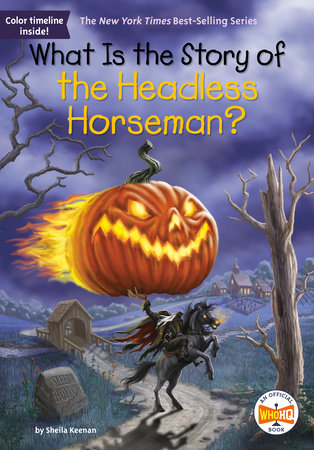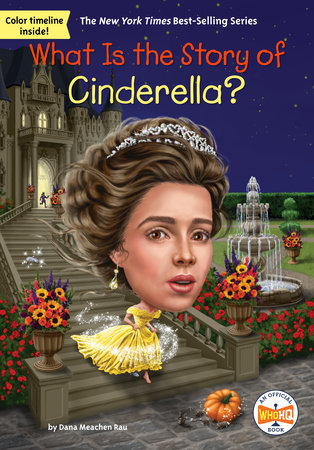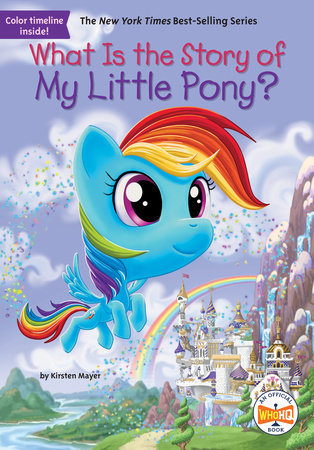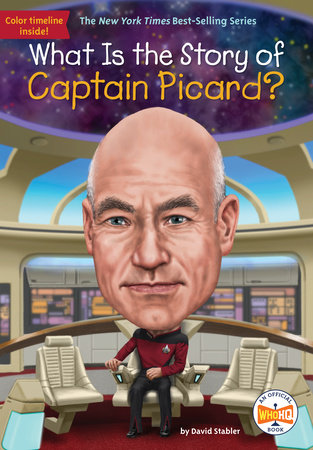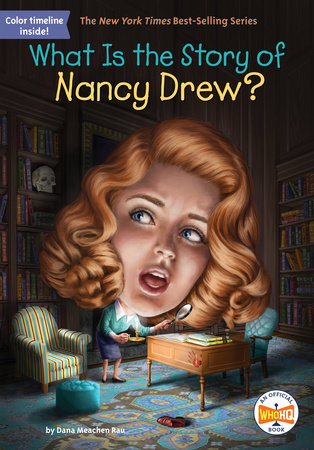Excerpt
What Is the Story of the Headless Horseman?
What Is the Story of the Headless Horseman? Every October, thousands of people flock to an area along the eastern shore of the Hudson River, about thirty miles north of New York City. They stroll down historic streets, imagining what life was like in the early days of the United States. They
ooh and
aah at an amazing display of seven thousand carved and illuminated jack-o’-lanterns. Some huddle into horse-drawn wagons for haunted hayrides or hold candlelit lanterns high as they roam through the local cemetery.
The quaint small towns and villages in this region have a long history. They were established by Dutch and then English settlers on land first inhabited by the Weckquaesgeek people. Revolutionary War battles were fought there. But this is also a place where Halloween comes to life. It’s the setting for America’s first ghost story!
Welcome to Sleepy Hollow, New York, home of the Headless Horseman.
This dark, menacing figure on a rearing stallion charges through the pages of “The Legend of Sleepy Hollow,” a famous short story by author Washington Irving. More than two hundred years after the story was first published, visitors still flock to Sleepy Hollow. They’re in search of the scary spots where key moments of the ghost story take place. Some of them no doubt secretly hope that the village’s most famous resident will gallop by—and that they’ll keep their heads if he does!
Washington Irving’s story has thrilled generations of readers. But how did he come up with this terrifying tale and its terrible main character? And what in the world happened to that horseman’s head?
The answers are part of America’s own story!
Chapter 1: The Father of American Literature Many historians call Washington Irving “The Father of American Literature.” That’s because at the time he wrote his popular books, articles, and short stories, the United States was a new country. Most literature taken seriously by educated people at that time was written and published by Europeans. A snobby English critic of the early 1800s asked, “In the four quarters of the globe, who reads an American book?”
Everybody! Or at least it seemed like that after Washington Irving started publishing his work. He became the first best-selling author in the United States and the first American to earn his living by his pen. He was a celebrity when the country itself was still celebrating having become an independent nation.
Irving was born in New York City on April 3, 1783. Just eight days later the Revolutionary War, which freed the American colonies from British rule, ended with a cease-fire. Washington Irving was named after the war hero who became the first president of the new nation. As a six-year-old, Irving watched the presidential inauguration of General George Washington in New York City, then the capital of the United States. He even met the famous man. Irving’s nanny followed the president around lower Manhattan, with her young charge in tow. She finally cornered President Washington in a shop and introduced his namesake. George Washington patted Washington Irving on the head and blessed him. The boy never forgot this, even when he became famous himself.
Washington Irving was the son of immigrants William Irving Sr., a sailor who had come from Scotland, and Sarah Saunders, from England. William Irving Sr. became a successful merchant in New York City, importing and selling hardware, wine, and household goods. He and Sarah had eleven children. Washington was their youngest child.
As a boy, he lived with his family on William Street in lower Manhattan, a part of the city that was bustling and thickly settled. But young Washington liked to roam north along the Hudson River where the city turned into smaller villages and open countryside. “I was always fond of visiting new scenes and observing strange characters and manners,” he said. This curiosity came in handy when Washington turned to writing.
As a teenager, Washington Irving studied to become a lawyer. He needed a profession in order to support himself. But he was not a very dedicated student. Nor was he really interested in the law. Irving preferred going to the theater, accepting dinner invitations, traveling, and keeping up with an interesting circle of friends and acquaintances. In 1802, when he was nineteen years old, he started writing letters that were published in his brother’s newspaper. Readers enjoyed Irving’s letters, which included theater reviews, funny descriptions of rowdy audiences, and mocking comments about marriage, fashion, and even dueling. He wrote these pieces using a pen name, a different name authors use to conceal their identity. Nonetheless, most people knew that printed letters signed by “Jonathan Oldstyle” were really written by Washington Irving. Pen names became a signature style for Irving in many of his later works.
Though he squeaked through the bar exam and became a lawyer, Washington Irving was still much more interested in dining, drinking, and gossiping about literature, culture, and politics. These interests cost money, though. Irving wasn’t all that excited about practicing law. And so he turned to writing.
In 1807, Washington Irving, his brother William, and some friends wrote and published a literary magazine called
Salmagundi. The articles in it poked fun at New York politics, well-known people, and the “fashionable world.”
Salmagundi was very popular; more and more readers became familiar with Washington Irving’s writing. Two years later, he became an even bigger success.
Washington published his first major book,
A History of New York, from the Beginning of the World to the End of the Dutch Dynasty, in 1809. He was twenty-six years old. It is a very clever blend of history, geography, and satire (a writing style that uses humor and exaggeration to mock something). In
A History of New York, facts can be funny and often aren’t even factual! Irving’s main intent was to poke fun at people who were too full of themselves, expose social or political ideas that were false or insincere, and ridicule behavior that was too stuffy or snobby.
But he also was concerned with how Americans would establish the history of their new country, the United States. Washington Irving understood that “history” often reflects the point of view of whoever is explaining what happened.
In between the humorous sections of his book, Irving also asked what he called the “gigantic question”: “What right had the first discoverers of America to land and take possession of a country, without first gaining the consent of its inhabitants . . . ?”
A History of New York is narrated by a character named Diedrich Knickerbocker, described as an eccentric “well-known Dutch historian.” There was no such person in real life. Knickerbocker came straight out of Washington Irving’s imagination.
The author also used the character of Diedrich Knickerbocker as a brilliant marketing tool to help sell his book. In October 1809, this notice and others like it appeared in several New York newspapers:
Left his lodgings, some time since, and has not since been heard of, a small elderly gentleman, dressed in an old black coat and cocked hat, by the name of Knickerbocker
. And readers paid attention! The missing man became a big topic of conversation and speculation in New York.
A few weeks later, in mid-November, another newspaper notice appeared. This one was from a man claiming to be Knickerbocker’s landlord. The landlord said the old man had disappeared, owing rent. But he had left a “very curious kind of written book” in his room. If Knickerbocker didn’t show up and pay up, the landlord was going to “dispose of his book to satisfy me for the same [overdue rent].”
Now New Yorkers were really intrigued: who—and
where—was Diedrich Knickerbocker?
Nowhere to be found, it seems. So the “landlord” had the book published to pay off
Knickerbocker’s debt. Meanwhile, Washington Irving had invented the whole mystery, including the old man and his landlord, and had planted all the newspaper notices. His hoax paid off! Everyone was talking about Knickerbocker, and more importantly, they were buying copies of
A History of New York hoping to learn more about him!


